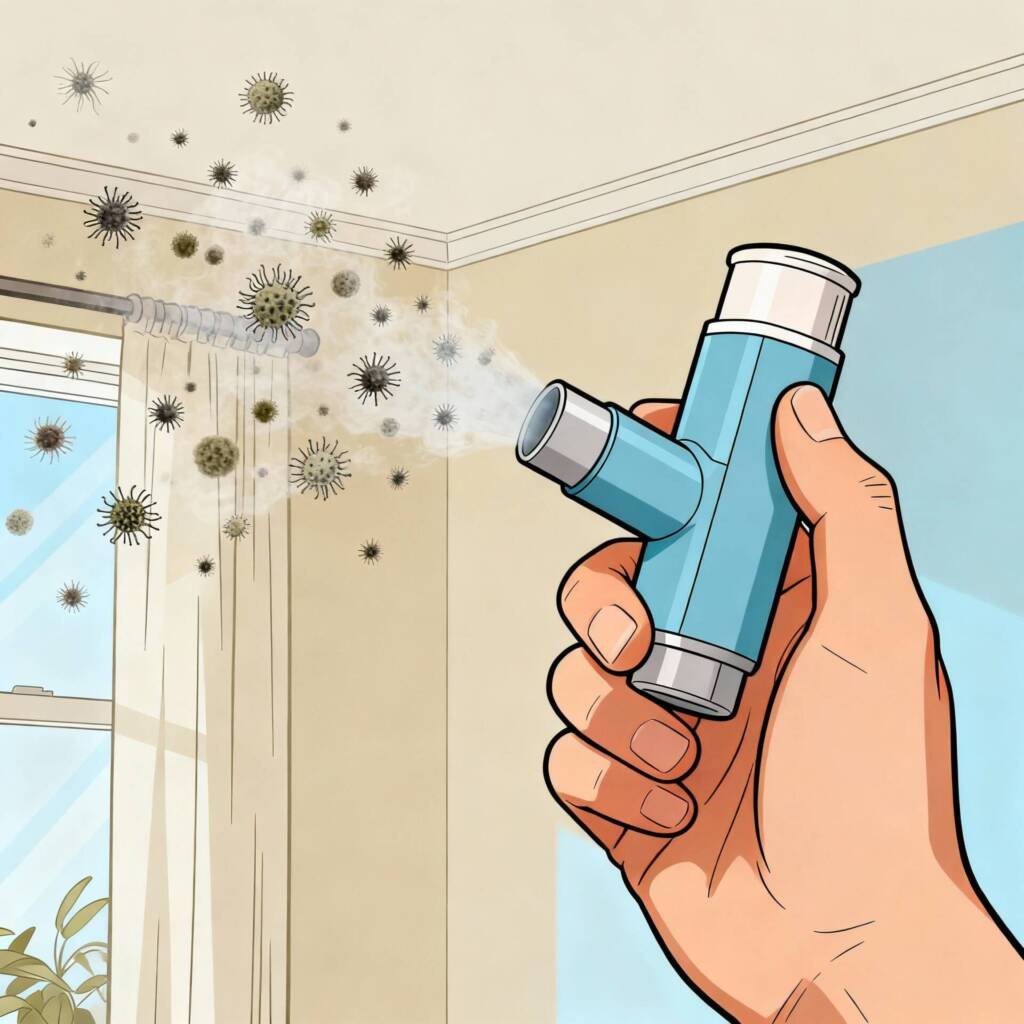Mold and asthma are two factors that can significantly impact respiratory health. In this comprehensive article, we will delve into the intricate relationship between mold exposure and asthma, providing valuable insights on how to manage and prevent associated risks. By understanding the connection between mold and asthma, you can take proactive steps to safeguard your well-being and that of your loved ones.
Mold and Asthma: A Troubling Association
The presence of mold can pose a significant concern, particularly for individuals with asthma. Mold spores, which are microscopic particles released by mold, can trigger asthma symptoms and exacerbate respiratory distress. When inhaled, these spores can cause inflammation in the airways, leading to wheezing, coughing, shortness of breath, chest tightness, and respiratory irritation. It is vital to identify potential mold sources in your surroundings to mitigate the risks associated with mold-related asthma.
Identifying Mold Triggers and Symptoms
Common symptoms of asthma related to mold exposure include:
- Persistent coughing: Mold spores can irritate the airways, leading to frequent coughing spells, especially when exposed to mold-infested environments.
- Wheezing: Mold-induced inflammation in the airways can cause a whistling or wheezing sound during breathing, indicating restricted airflow.
- Shortness of breath: Mold sensitivity can trigger episodes of breathlessness, making it difficult to inhale or exhale fully.
- Chest tightness: Mold exposure may lead to a sensation of pressure or tightness in the chest, causing discomfort and restricted movement.
- Respiratory irritation: Mold spores can irritate the respiratory system, resulting in a scratchy throat, itchy or watery eyes, and nasal congestion.
- Increased asthma attacks: Mold can act as a potent asthma trigger, increasing the frequency and severity of asthma attacks in individuals with mold sensitivity or allergies.
Mold sensitivity can vary from person to person. Some individuals may experience immediate asthma symptoms upon mold exposure, while others might develop a delayed reaction. It is crucial to be aware of the common signs of mold-related asthma, including increased difficulty breathing, coughing that worsens at night, sinus congestion, and recurring respiratory infections. If you notice these symptoms, particularly in environments where mold growth is likely, it’s essential to take prompt action.
Preventing Mold Growth in Your Environment
Effective mold remediation and prevention strategies are key to maintaining a healthy indoor environment, especially for individuals with asthma. Here are some practical measures you can take to minimize the risk of mold growth:
1. Control Moisture: Mold thrives in damp environments. To prevent mold growth, ensure that indoor humidity levels stay below 50%. Use dehumidifiers in areas prone to moisture buildup, such as basements, bathrooms, and kitchens. Fix any leaks promptly and address water damage as soon as possible.
2. Enhance Ventilation: Proper ventilation is crucial for preventing mold growth. Ensure adequate airflow in your home by using exhaust fans in bathrooms and kitchens, opening windows regularly, and utilizing air vents and air conditioners appropriately. Proper ventilation helps reduce excess moisture and prevents stagnant air, which can contribute to mold growth.
3. Regular Cleaning and Maintenance: Regularly clean and dry areas prone to moisture, such as bathrooms, showers, and laundry rooms. Use mold-resistant cleaners and ensure that surfaces are thoroughly dried after cleaning. Pay attention to often overlooked areas, such as shower curtains, bath mats, and carpets, which can harbor moisture and become breeding grounds for mold.
4. Mold-Resistant Materials: Consider using mold-resistant building materials when renovating or constructing your home. These materials, such as mold-resistant drywall or paints, can help inhibit mold growth and create a more mold-resistant environment.
5. Organize and Declutter: Cluttered and poorly organized spaces can hinder proper air circulation and make it challenging to identify mold growth. Regularly declutter and organize your living spaces, ensuring that furniture and belongings are not blocking vents or obstructing airflow.

Strategies for Asthma Management in Moldy Environments
For individuals with asthma, managing the condition in moldy environments requires additional attention. Here are some essential strategies to consider:
1. Medication Management: Work closely with your healthcare provider to develop a personalized asthma management plan. Ensure that you have a sufficient supply of prescribed medications, including inhalers and allergy medications, to manage asthma symptoms effectively.
2. Asthma Triggers Awareness: Educate yourself about common asthma triggers, including mold, and learn to identify early signs of asthma exacerbation. Stay vigilant about changes in your symptoms and seek prompt medical attention if necessary.
3. Indoor Air Quality: Improve indoor air quality by using air purifiers with high-efficiency particulate air (HEPA) filters. These filters can help remove airborne mold spores and other allergens, improving the overall air quality in your home.
4. Allergist Consultation: Consider consulting with an allergist or asthma specialist for a comprehensive evaluation of your condition. They can conduct allergy testing to identify specific allergens, including mold, and provide personalized guidance on managing your asthma effectively.
The Importance of Mold Testing and Professional Assistance
If you suspect mold issues in your home or experience persistent asthma symptoms, seeking professional assistance is crucial. Mold testing can help identify hidden mold sources, allowing for targeted remediation efforts. Trained professionals can assess the extent of the mold problem, recommend appropriate remediation techniques, and help create a mold-free living environment.
Conclusion:
Mold and asthma are interlinked health concerns that demand attention and proactive management. By understanding the association between mold exposure and asthma symptoms, along with implementing preventive measures and seeking professional guidance when necessary, you can safeguard your respiratory health and ensure a mold-free living environment. Stay informed, take action, and prioritize your well-being. With the right knowledge and strategies, you can effectively manage asthma in the presence of mold, promoting a healthier life for yourself and your loved ones.







